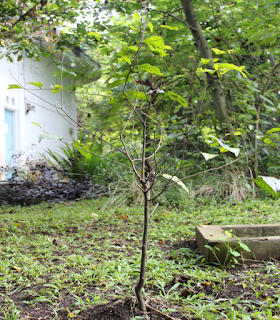Phaseolus vulgaris L.
Phaseolus vulgaris Leaves
(Hidayat & Abdurrahman, 2017)
Phaseolus vulgaris Flower
(Hidayat & Abdurrahman, 2017)
Phaseolus vulgaris Pod
(Hidayat & Abdurrahman, 2017)
Regnum : Plantae – Plants
Subregnum : Tracheobionta – Vascular plants
Divisio : Magnoliophyta – Flowering plants
Classis : Magnoliopsida – Dicotyledons
Subclassis : Rosidae
Ordo : Fabales
Familia : Fabaceae – Pea family
Genus :
Species : Phaseolus vulgaris L.
Description
Description
The common bean (Phaseolus vulgaris L.) is a major grain legume consumed worldwide for its edible seeds and pods. It is a highly polymorphic warm-season, herbaceous annual. There are 2 plant types: erect herbaceous bushes, up to 20-60 cm high; and twining, climbing vines up to 2-5 m long (Ecocrop, 2013; Smoliak et al., 1990). It has a taproot with many adventitious roots (Ecoport, 2013). The stems of bushy types are rather slender, pubescent and many-branched. In twinning types, the stems are prostrate for most of their length and rise toward the end (Ecoport, 2013).
The leaves, borne on long green petioles, are green or purple in colour and trifoliate. Leaflets are 6-15 cm long and 3-11 cm broad (Feedipedia, 2019).
The inflorescences are axillary or terminal, 15-35 cm long racemes. The flowers are arranged in pairs or solitary along the rachis, white to purple and typically papillonaceous (Ecoport, 2013; Wortmann, 2006). Once pollinated, each flower gives rise to one pod. Pods are slender, green, yellow, black or purple in colour, sometimes striped. They can be cylindrical or flat, straight or curved, 1-1.5 cm wide and up to 20 cm in length (Wortmann, 2006).
The pods may contain 4 to 12 seeds. The seeds are 0.5-2 cm long, kidney-shaped and highly variable in colour depending on the variety: white, red, green, tan, purple, gray or black (Feedipedia, 2019)..
Common beans are an important source of proteins, minerals (iron and zinc) and vitamins for many human populations (Beebe et al., 2000). Immature pods are eaten fresh and can be easily preserved by freezing, canning or dehydrating. Mature pods and seeds are dried. Beans are eaten boiled, baked, fried, or ground into flour. Crop residues, such as dried pods and stems (straw) and processing by-products (discarded pods, pod extremities), can be used as fodder (Wortmann, 2006; CNC, 2004)
Phaseolus vulgaris originated from Central and South America, where it was cultivated as early as 6000 BC in Peru and 5000 BC in Mexico. It was introduced to the Old World by the Spaniards and the Portuguese. It is now widespread and cultivated as a major food crop in many tropical, subtropical and temperate areas of the Americas, Europe, Africa and Asia (Wortmann, 2006).
Location : UPI Bumi Siliwangi Stadium
Please cite this article as:
Azis, A. M. (2019). UPI Seed Plants: Phaseolus vulgaris L. Online at
https://upiseedplants-one-aldi.blogspot.com/. Accessed (Date)
Please cite this article as:
Azis, A. M. (2019). UPI Seed Plants: Phaseolus vulgaris L. Online at
https://upiseedplants-one-aldi.blogspot.com/. Accessed (Date)







Comments
Post a Comment